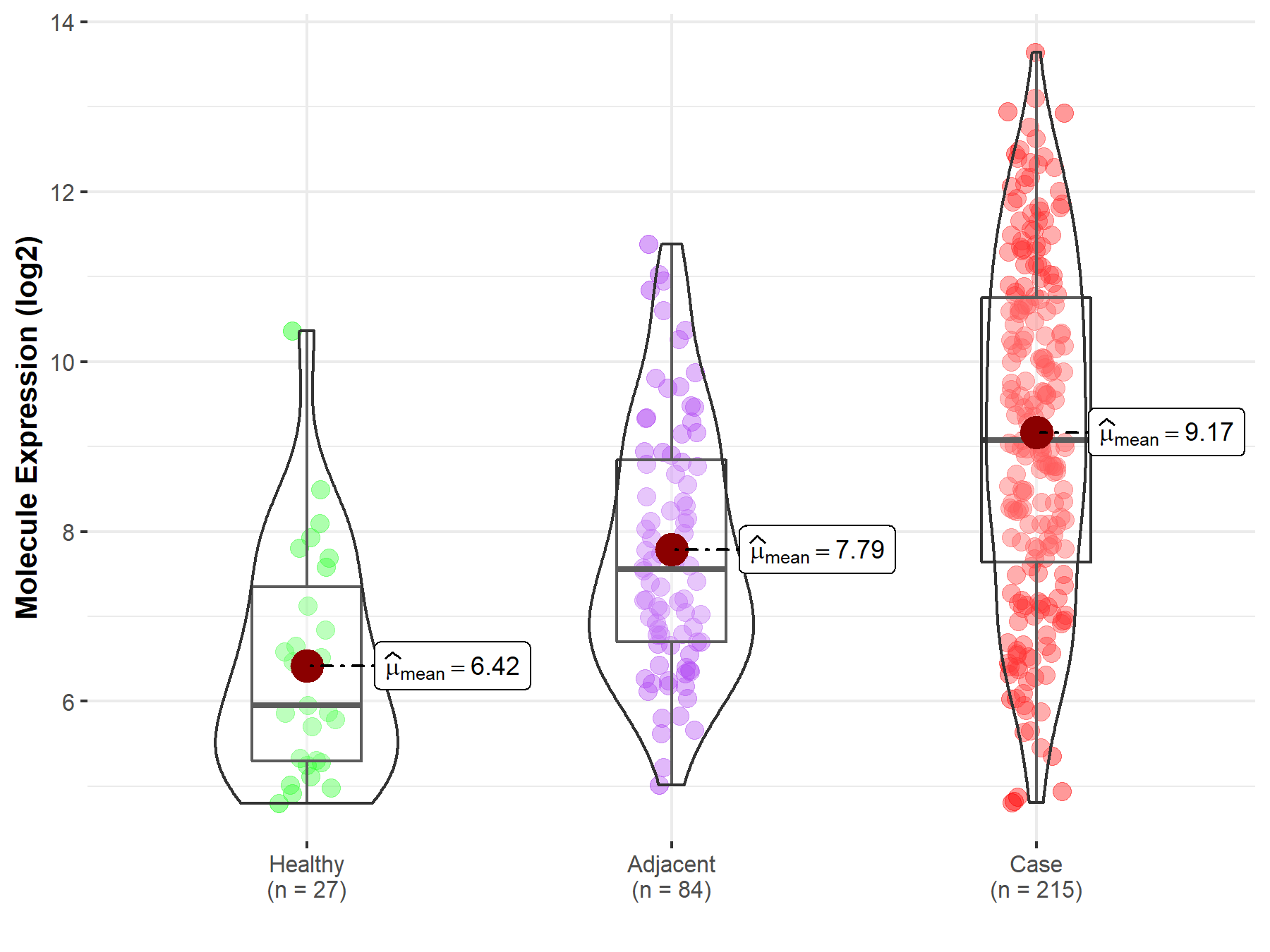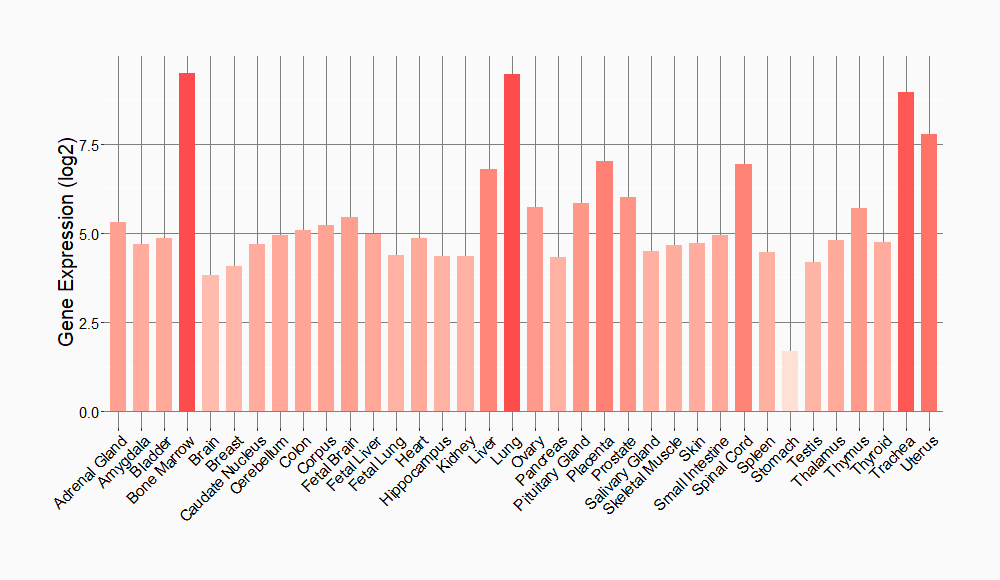Molecule Information
General Information of the Molecule (ID: Mol00438)
| Name |
Interleukin-8 (IL8)
,Homo sapiens
|
||||
|---|---|---|---|---|---|
| Synonyms |
IL-8; C-X-C motif chemokine 8; Chemokine (C-X-C motif) ligand 8; Emoctakin; Granulocyte chemotactic protein 1; GCP-1; Monocyte-derived neutrophil chemotactic factor; MDNCF; Monocyte-derived neutrophil-activating peptide; MONAP; Neutrophil-activating protein 1; NAP-1; Protein 3-10C; T-cell chemotactic factor; GCP/IL-8 protein IV; IL8/NAP1 form I; (Ala-IL-8)77; GCP/IL-8 protein II; IL-8(1-77); IL8/NAP1 form II; MDNCF-b; (Ser-IL-8)72; GCP/IL-8 protein I; IL8/NAP1 form III; Lymphocyte-derived neutrophil-activating factor; LYNAP; MDNCF-c; Neutrophil-activating factor; NAF; GCP/IL-8 protein V; IL8/NAP1 form IV; GCP/IL-8 protein VI; IL8/NAP1 form V; GCP/IL-8 protein III; IL8/NAP1 form VI; IL8
Click to Show/Hide
|
||||
| Molecule Type |
Protein
|
||||
| Gene Name |
CXCL8
|
||||
| Gene ID | |||||
| Location |
chr4:73740519-73743716[+]
|
||||
| Sequence |
MTSKLAVALLAAFLISAALCEGAVLPRSAKELRCQCIKTYSKPFHPKFIKELRVIESGPH
CANTEIIVKLSDGRELCLDPKENWVQRVVEKFLKRAENS Click to Show/Hide
|
||||
| Function |
IL-8 is a chemotactic factor that attracts neutrophils, basophils, and T-cells, but not monocytes. It is also involved in neutrophil activation. It is released from several cell types in response to an inflammatory stimulus. IL-8(6-77) has a 5-10-fold higher activity on neutrophil activation, IL-8(5-77) has increased activity on neutrophil activation and IL-8(7-77) has a higher affinity to receptors CXCR1 and CXCR2 as compared to IL-8(1-77), respectively.
Click to Show/Hide
|
||||
| Uniprot ID | |||||
| Ensembl ID | |||||
| HGNC ID | |||||
| Click to Show/Hide the Complete Species Lineage | |||||
Type(s) of Resistant Mechanism of This Molecule
Drug Resistance Data Categorized by Drug
Approved Drug(s)
2 drug(s) in total
| Drug Resistance Data Categorized by Their Corresponding Mechanisms | ||||
|
|
||||
| Disease Class: Ovarian cancer | [1] | |||
| Resistant Disease | Ovarian cancer [ICD-11: 2C73.0] | |||
| Resistant Drug | Carboplatin | |||
| Molecule Alteration | Expression | Up-regulation |
||
| Experimental Note | Revealed Based on the Cell Line Data | |||
| In Vitro Model | SkOV3 cells | Ovary | Homo sapiens (Human) | CVCL_0532 |
| A2780 cells | Ovary | Homo sapiens (Human) | CVCL_0134 | |
| Experiment for Molecule Alteration |
ELISA assay | |||
| Experiment for Drug Resistance |
MTT assay | |||
| Mechanism Description | Our findings in the fallopian tube cancer and ovarian cancer cell lines showed that SKOV3 cells displayed 10-fold greater resistance to cisplatin and 5.8 times more resistance to carboplatin than A2780 cells. SKOV3 cells displayed platinum-induced IL-6 and IL-8 overproduction whereas wild type A2780 displayed no detectable cytokine production. | |||
| Disease Class: Ovarian cancer | [1] | |||
| Resistant Disease | Ovarian cancer [ICD-11: 2C73.0] | |||
| Resistant Drug | Carboplatin | |||
| Molecule Alteration | Expression | Up-regulation |
||
| Experimental Note | Identified from the Human Clinical Data | |||
| In Vitro Model | Ovarian cancer tissue | . | ||
| Experiment for Molecule Alteration |
ELISA assay | |||
| Experiment for Drug Resistance |
MTT assay | |||
| Mechanism Description | Our findings in the fallopian tube cancer and ovarian cancer cell lines showed that SKOV3 cells displayed 10-fold greater resistance to cisplatin and 5.8 times more resistance to carboplatin than A2780 cells. SKOV3 cells displayed platinum-induced IL-6 and IL-8 overproduction whereas wild type A2780 displayed no detectable cytokine production. | |||
| Disease Class: Fallopian tube cancer | [1] | |||
| Resistant Disease | Fallopian tube cancer [ICD-11: 2C74.0] | |||
| Resistant Drug | Carboplatin | |||
| Molecule Alteration | Expression | Up-regulation |
||
| Experimental Note | Identified from the Human Clinical Data | |||
| In Vitro Model | Fallopian tube cancer tissue | . | ||
| Experiment for Molecule Alteration |
ELISA assay | |||
| Experiment for Drug Resistance |
MTT assay | |||
| Mechanism Description | Our findings in the fallopian tube cancer and ovarian cancer cell lines showed that SKOV3 cells displayed 10-fold greater resistance to cisplatin and 5.8 times more resistance to carboplatin than A2780 cells. SKOV3 cells displayed platinum-induced IL-6 and IL-8 overproduction whereas wild type A2780 displayed no detectable cytokine production. | |||
| Drug Sensitivity Data Categorized by Their Corresponding Mechanisms | ||||
|
|
||||
| Disease Class: Oral cancer | [2] | |||
| Sensitive Disease | Oral cancer [ICD-11: 2B6E.1] | |||
| Sensitive Drug | Cisplatin | |||
| Molecule Alteration | Expression | Down-regulation |
||
| Experimental Note | Revealed Based on the Cell Line Data | |||
| Cell Pathway Regulation | Cell viability | Inhibition | hsa05200 | |
| In Vitro Model | GNM cells | Oral | Homo sapiens (Human) | CVCL_WL58 |
| SAS cells | Oral | Homo sapiens (Human) | CVCL_1675 | |
| Experiment for Molecule Alteration |
Western blot analysis | |||
| Experiment for Drug Resistance |
MTT assay | |||
| Mechanism Description | The inhibitory effect of let-7c on various stemness phenotypes was reverted by IL-8, indicating that lower expression of let-7c may confer higher cancer stemness through a failure to downregulate IL-8. | |||
Investigative Drug(s)
1 drug(s) in total
| Drug Sensitivity Data Categorized by Their Corresponding Mechanisms | ||||
|
|
||||
| Disease Class: Otitis media | [3] | |||
| Sensitive Disease | Otitis media [ICD-11: AA80.0] | |||
| Sensitive Drug | Ceragenin | |||
| Molecule Alteration | Expression | Down-regulation |
||
| Experimental Note | Discovered Using In-vivo Testing Model | |||
| Cell Pathway Regulation | IL-8 pathway | Regulation | hsa04622 | |
| In Vitro Model | Streptococcus pneumoniae ATCC 49619 | 1313 | ||
| Experiment for Molecule Alteration |
ELISA assay | |||
| Experiment for Drug Resistance |
Broth microdilution method assay | |||
| Mechanism Description | Immobilization of ceragenins on the surface of nonspherical gold nanoparticles intensifies their antibacterial effects, against both planktonic and biofilm form of bacteria. At the same time, it reduces the secretion of IL-8 and reduces the inflammatory response. | |||
| Disease Class: Otitis media | [3] | |||
| Sensitive Disease | Otitis media [ICD-11: AA80.0] | |||
| Sensitive Drug | Ceragenin | |||
| Molecule Alteration | Expression | Down-regulation |
||
| Experimental Note | Discovered Using In-vivo Testing Model | |||
| Cell Pathway Regulation | IL-8 pathway | Regulation | hsa04622 | |
| In Vitro Model | Streptococcus pneumoniae ATCC 49619 | 1313 | ||
| Experiment for Molecule Alteration |
ELISA assay | |||
| Experiment for Drug Resistance |
Broth microdilution method assay | |||
| Mechanism Description | Immobilization of ceragenins on the surface of nonspherical gold nanoparticles intensifies their antibacterial effects, against both planktonic and biofilm form of bacteria. At the same time, it reduces the secretion of IL-8 and reduces the inflammatory response. | |||
| Disease Class: Otitis media | [3] | |||
| Sensitive Disease | Otitis media [ICD-11: AA80.0] | |||
| Sensitive Drug | Ceragenin | |||
| Molecule Alteration | Expression | Down-regulation |
||
| Experimental Note | Discovered Using In-vivo Testing Model | |||
| Cell Pathway Regulation | IL-8 pathway | Regulation | hsa04622 | |
| In Vitro Model | Moraxella catarrhalis ATCC 25238 | 480 | ||
| Experiment for Molecule Alteration |
ELISA assay | |||
| Experiment for Drug Resistance |
Broth microdilution method assay | |||
| Mechanism Description | Immobilization of ceragenins on the surface of nonspherical gold nanoparticles intensifies their antibacterial effects, against both planktonic and biofilm form of bacteria. At the same time, it reduces the secretion of IL-8 and reduces the inflammatory response. | |||
| Disease Class: Otitis media | [3] | |||
| Sensitive Disease | Otitis media [ICD-11: AA80.0] | |||
| Sensitive Drug | Ceragenin | |||
| Molecule Alteration | Expression | Down-regulation |
||
| Experimental Note | Discovered Using In-vivo Testing Model | |||
| Cell Pathway Regulation | IL-8 pathway | Regulation | hsa04622 | |
| In Vitro Model | Moraxella catarrhalis ATCC 25238 | 480 | ||
| Experiment for Molecule Alteration |
ELISA assay | |||
| Experiment for Drug Resistance |
Broth microdilution method assay | |||
| Mechanism Description | Immobilization of ceragenins on the surface of nonspherical gold nanoparticles intensifies their antibacterial effects, against both planktonic and biofilm form of bacteria. At the same time, it reduces the secretion of IL-8 and reduces the inflammatory response. | |||
| Disease Class: Otitis media | [3] | |||
| Sensitive Disease | Otitis media [ICD-11: AA80.0] | |||
| Sensitive Drug | Ceragenin | |||
| Molecule Alteration | Expression | Down-regulation |
||
| Experimental Note | Discovered Using In-vivo Testing Model | |||
| Cell Pathway Regulation | IL-8 pathway | Regulation | hsa04622 | |
| In Vitro Model | Haemophilus influenzae ATCC 49766 | 727 | ||
| Experiment for Molecule Alteration |
ELISA assay | |||
| Experiment for Drug Resistance |
Broth microdilution method assay | |||
| Mechanism Description | Immobilization of ceragenins on the surface of nonspherical gold nanoparticles intensifies their antibacterial effects, against both planktonic and biofilm form of bacteria. At the same time, it reduces the secretion of IL-8 and reduces the inflammatory response. | |||
| Disease Class: Otitis media | [3] | |||
| Sensitive Disease | Otitis media [ICD-11: AA80.0] | |||
| Sensitive Drug | Ceragenin | |||
| Molecule Alteration | Expression | Down-regulation |
||
| Experimental Note | Discovered Using In-vivo Testing Model | |||
| Cell Pathway Regulation | IL-8 pathway | Regulation | hsa04622 | |
| In Vitro Model | Haemophilus influenzae ATCC 49766 | 727 | ||
| Experiment for Molecule Alteration |
ELISA assay | |||
| Experiment for Drug Resistance |
Broth microdilution method assay | |||
| Mechanism Description | Immobilization of ceragenins on the surface of nonspherical gold nanoparticles intensifies their antibacterial effects, against both planktonic and biofilm form of bacteria. At the same time, it reduces the secretion of IL-8 and reduces the inflammatory response. | |||
Disease- and Tissue-specific Abundances of This Molecule
ICD Disease Classification 02

| Differential expression of molecule in resistant diseases | ||
| The Studied Tissue | Oral tissue | |
| The Specified Disease | Oral squamous cell carcinoma | |
| The Expression Level of Disease Section Compare with the Healthy Individual Tissue | p-value: 9.28E-12; Fold-change: 3.13E+00; Z-score: 2.30E+00 | |
| The Expression Level of Disease Section Compare with the Adjacent Tissue | p-value: 5.21E-10; Fold-change: 1.52E+00; Z-score: 1.03E+00 | |
|
Molecule expression in the normal tissue adjacent to the diseased tissue of patients
Molecule expression in the diseased tissue of patients
Molecule expression in the normal tissue of healthy individuals
|
||
| Disease-specific Molecule Abundances |

|
Click to View the Clearer Original Diagram |
| Differential expression of molecule in resistant diseases | ||
| The Studied Tissue | Ovary | |
| The Specified Disease | Ovarian cancer | |
| The Expression Level of Disease Section Compare with the Healthy Individual Tissue | p-value: 8.91E-02; Fold-change: 1.79E+00; Z-score: 9.03E-01 | |
| The Expression Level of Disease Section Compare with the Adjacent Tissue | p-value: 2.06E-01; Fold-change: -9.89E-02; Z-score: -2.75E-02 | |
|
Molecule expression in the normal tissue adjacent to the diseased tissue of patients
Molecule expression in the diseased tissue of patients
Molecule expression in the normal tissue of healthy individuals
|
||
| Disease-specific Molecule Abundances |

|
Click to View the Clearer Original Diagram |
Tissue-specific Molecule Abundances in Healthy Individuals


|
||
References
If you find any error in data or bug in web service, please kindly report it to Dr. Sun and Dr. Zhang.
